The Five C's of Survival
A guide to the five most important resources for wilderness survival
Cordage
The importance of good Cordage may not be as obvious as Cutting and Combustion, but it has many uses. Cordage, another name for rope, string, lashings, etc., can be used for a clothes drying line, animal traps, climbing rope, hanging up a killed animal to clean it, hanging food or a pot over a fire, hanging up miscellaneous objects, making a net, and much more. Cordage is especially useful for building shelter, where often poles and/or roofing need to be tied together. It can be used as a shoulder strap for carrying supplies, or to tie supplies to your backpack. A rope can be used as a pants belt, and 550 paracord makes great shoelaces.
Cordage is a fundamental component of some forms of friction fire, such as bowdrill. Cordage is also utilized in many forms of boat building, such as lashing together a raft or canoe-style boat frame. Strong Cordage can even be used to improvise weapons, such as a bow string, lasso, or fashioned into a bola throwing device. Cordage can make a warning alarm for dangerous predators at your campsite, by tying the rope like a tripwire around your camp and hanging something noisy on it like metal utensils that will clang together when an animal bumps into the rope.
Cordage can be used for first aid, such as strapping a brace against a broken bone, creating a sling for an arm, wrapping bandages, securing an injured person to a stretcher if necessary, pulling an injured person up a ledge or lowering them down, or to lower down rescue supplies, or to secure someone to an anchor so they don't fall into water, etc. Cordage obviously can be used as a tourniquet to stop bleeding.
Some types of Cordage are flammable and so can be shredded and used as tinder or kindling if you're desperate. Flammable Cordage can also be used as a candle wick, by submerging it in wax, oil or fat, leaving just the tip exposed and lighting it on fire. A lot of ropes can be broken down into smaller and smaller filaments that may be suitable for fishing line, stitch sutures, sewing thread, etc. Cordage is one of those things with seemingly infinite uses, many of which you will never think of until the time comes, this is why it is one of the most important resources you can have in the wilderness.
You may be able to improvise Cordage from natural materials in the environment, such as vines. Jungles are notorious for this. Smaller diameter vines tend to work better than thick vines because they are more flexible. Soaking the vines in water will make them more pliable. Other locations will have little to no options for wild Cordage. However, even in places without vines, sometimes there are fibrous plants with strong fibers that can be carefully separated and weaved into very respectable Cordage, such as the Agave plant and even some types of tree bark. Check for long, fibrous strands in plants around you, and then just try some. You never know what will work until you try, and even if it doesn't work, at least you will have gained some knowledge about the environment around you.
There are three main qualities to good Cordage and what you should look for when choosing any, especially if trying to improvise some out of natural materials. The three main qualities of Cordage are Length, Strength, and Flexibility. If a rope is weak in any of these three qualities, it becomes ineffective. What good is a rope that is strong but not flexible? Or one that is very long but breaks easily? If your rope lacks strength, specifically called tensile strength, you may want to try weaving, twisting, or braiding some together which will make it much stronger. If you have several short pieces of Cordage, there are good knots that can be used to combine them, such as the double fisherman's knot, but avoid using knots that are not suited for this purpose as they could easily slip apart. If your rope is not flexible enough, you may be able to split it lengthwise to make it thinner and more flexible.
Of course, there are many options of different kinds of Cordage available at your local supplier, such as climbing rope, boat rope, cotton string, bailing twine, leather lashings, etc. A popular choice of bushcrafting Cordage, and what I personally use most of the time, is 550 paracord. It is strong, durable, flexible, lightweight, thin, and very good for general purposes. It can also be broken down into smaller fibers. 550 paracord is made of nylon and is easy to cut with a knife. It's also inexpensive and comes in a variety of colors. I always carry a large bundle of 50 feet or more of 550 paracord when I go camping in the wilderness, and I usually run out!
550 paracord is perhaps the best Cordage for bushcraft and wilderness survival

Another great survival tool that has many uses and can be improvised into cordage is duct tape. In fact this even comes in some store-bought survival kits or camping supplies. I often carry a small roll of duct tape with me in my survival kit, I aim for the heavy-duty kind such as Gorilla Tape. You can take a fresh roll of duct tape and feed it out and just roll it over on itself into a more convenient, smaller roll. If you tried to carry the whole cardboard roll in your backpack it would be cumbersome. I have often resorted to using duct tape for cordage after my 550 paracord ran out.
Duct tape has many uses even in the wilderness, including improvised Cordage

Of course, what use is Cordage if you don't know how to tie any good knots? In order to be most effective with Cordage, it's important to know at least a few basic knots and their specific purposes. Learn and practice some knots, especially just a few simple, classic knots for several different uses. You don't need to know every knot in the book to effectively use Cordage. The knots that I personally use the most often are the square knot, bowline, clove hitch, and double fisherman's. I keep this cheap little card in my pack for reference in case I forget how to tie a certain knot or need one that I rarely use.
Knot tying is a fundamental aspect of Cordage use; this card provides a quick reference for some key knots

Click below to learn about each C of the Five C's of Survival:
• Cutting
• Combustion
• Cordage
• Container
• Cover
Leave A Comment
Add Comment
Wilderness
Survival Gear
Fixed Blade Bushcraft Knife
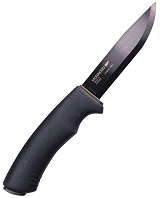
Ferrocerium
Rod Firesteel
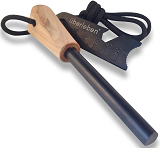
550 Paracord
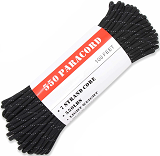
Stainless Steel Canteen
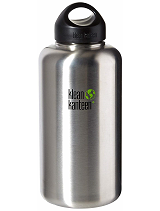
Waterproof
Tarp
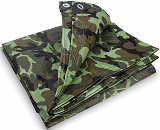
Multitool
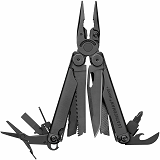
Stormproof Matches
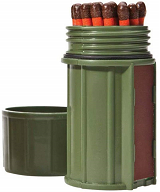
Folding
Hand Saw
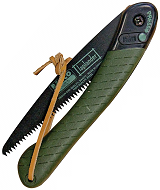
Stainless Steel
Pot
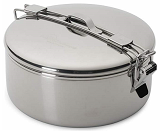
Waterproof
Rain Poncho
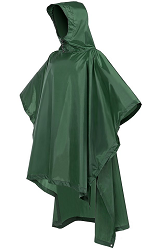
Water
Purification
Tablets
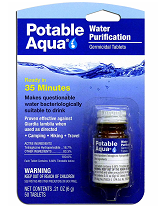
Kukri Machete
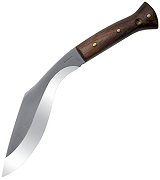
Magnifying
Lens Firestarter
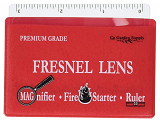
Duct Tape
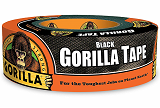
Compass
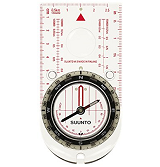
Water Filter
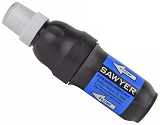
Magnesium
Stick Firestarter
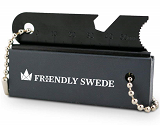
Blade
Sharpener
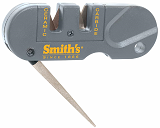
Firestarting
Tinder
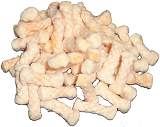
Fishing Kit
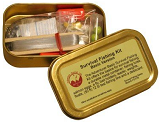

Survival Gear
Fixed Blade Bushcraft Knife

Ferrocerium
Rod Firesteel

550 Paracord

Stainless Steel Canteen

Waterproof
Tarp

Multitool

Stormproof Matches

Folding
Hand Saw

Stainless Steel
Pot

Waterproof
Rain Poncho

Water
Purification
Tablets

Kukri Machete

Magnifying
Lens Firestarter

Duct Tape

Compass

Water Filter

Magnesium
Stick Firestarter

Blade
Sharpener

Firestarting
Tinder

Fishing Kit


Comments (0)